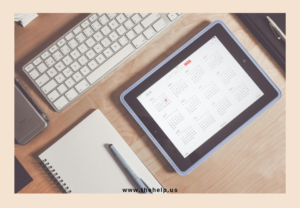So, you followed our tips on “Asking for a Raise: When, How, and Why Timing Matters” and just scored that long-awaited raise. High-five! While it’s super tempting to start imagining all the ways you can upgrade your lifestyle, it’s crucial to handle this financial boost wisely. Let’s dive into some friendly and practical tips on how to manage your finances and avoid lifestyle inflation when you get a raise.
1. Revisit and Refine Your Budget
The first step after a raise should be revisiting your budget. With a higher income, it’s essential to adjust your spending plan to ensure it aligns with your financial goals without succumbing to unnecessary splurges.
Try using the 50/30/20 rule as a starting point: dedicate 50% of your income to needs (rent, utilities, groceries), 30% to wants (entertainment, dining out), and 20% to savings and investments. However, be cautious with the “wants” category to avoid lifestyle inflation. Aim to maintain or even reduce your discretionary spending to prevent unnecessary financial strain in the future.
2. Boost Your Savings and Investments
With a raise comes an excellent opportunity to bolster your savings and investments. Consider automating transfers to a separate savings or investment account to ensure consistent contributions without the temptation to splurge.
Look into high-yield savings accounts or retirement investment options like a Roth IRA or 401(k) to maximize your savings potential. Remember, the magic of compound interest works best when you start saving and investing early and consistently.
3. Tackle Your Debts Strategically
If you have lingering debts, such as credit card balances or student loans, use part of your raise to accelerate your repayment strategy. Prioritize paying off high-interest debts first to minimize interest charges and improve your financial health.
Avoid the trap of lifestyle inflation by resisting the urge to increase your spending on non-essential items as your income grows. Instead, channel your extra income towards debt repayment and watch your financial freedom grow.
4. Treat Yourself Mindfully
Getting a raise is definitely cause for celebration, and treating yourself is absolutely okay—in moderation. Set aside a small portion of your raise for enjoyable purchases or experiences that align with your values and bring genuine happiness.
Be mindful of lifestyle inflation by distinguishing between wants and needs. Instead of upgrading to a more lavish lifestyle across the board, focus on meaningful experiences or investments that add long-term value to your life.
5. Seek Professional Financial Advice
Consider consulting a financial advisor to help you navigate the complexities of managing your increased income. A knowledgeable advisor can offer personalized guidance tailored to your financial situation, helping you make informed decisions and avoid lifestyle inflation pitfalls.
Getting a raise is an exciting opportunity to enhance your financial stability and achieve your long-term goals. By revisiting and refining your budget, boosting your savings and investments, strategically tackling debts, treating yourself mindfully, and seeking professional advice, you can manage your finances wisely and steer clear of lifestyle inflation. Remember to work smart and be a blessing to someone today. Stay safe and healthy!
Written by Jaie O. TheHelp




